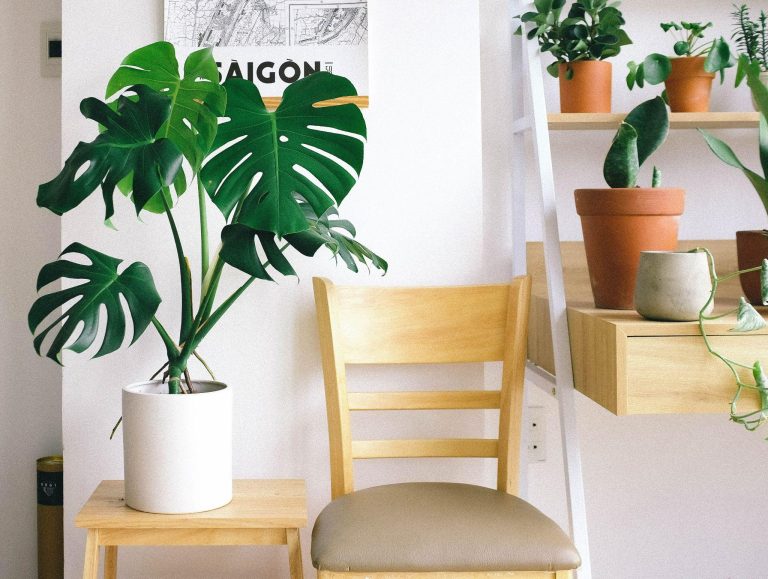Indoor plant delivery has become an increasingly popular service, offering individuals the convenience of bringing greenery into their homes without the need to visit physical stores. This article aims to inform readers about the benefits of indoor plants, the types available for delivery, how to select suitable plants for one’s home, and tips for their care.
By exploring why indoor plant delivery is a convenient choice, this article seeks to provide a comprehensive understanding of this growing trend in urban living.
Benefits of Indoor Plants
The benefits of indoor plant delivery are numerous and varied.
One significant advantage is their ability to improve air quality. Through a process called photosynthesis, plants absorb carbon dioxide and release oxygen, thereby increasing the oxygen levels indoors. They also act as natural air purifiers by filtering harmful toxins such as formaldehyde, benzene, and trichloroethylene from the air. This can lead to a healthier environment and reduce the risk of respiratory issues.
Additionally, indoor plants have been found to have stress-reducing effects on individuals. Studies have shown that being in close proximity to nature can lower blood pressure, heart rate, and cortisol levels – which are indicators of stress. The presence of greenery in indoor spaces promotes relaxation and provides a sense of calmness, making them beneficial for both physical and mental well-being.
Types of Indoor Plants Available for Delivery
Available for delivery are a wide range of plant species suitable for indoor environments. These plants not only add beauty and aesthetic appeal to any space but also provide numerous health benefits.
Some popular indoor plant varieties include the snake plant (Sansevieria trifasciata), which is known for its ability to purify the air by removing toxins such as formaldehyde and benzene. Another popular choice is the spider plant (Chlorophytum comosum), which helps in reducing airborne pollutants and improves overall air quality. Additionally, the peace lily (Spathiphyllum spp.) is widely appreciated for its ability to remove common indoor pollutants like ammonia, benzene, and formaldehyde.
The health benefits of these indoor plants include improved air quality, increased humidity levels, reduced stress levels, and enhanced mood and productivity. Incorporating these green companions into your indoor environment can create a healthier and more pleasant living or working space.
How to Choose the Right Indoor Plant for Your Home
One must consider various factors when selecting the appropriate indoor plant for a residential environment. Indoor plant selection requires careful consideration of the specific needs and requirements of both the plant and its surroundings.
Firstly, it is important to assess the amount of sunlight available in the designated space as different plants have varying light requirements. Additionally, factors such as humidity levels, temperature, and air circulation should also be taken into account.
Furthermore, it is crucial to consider one’s own lifestyle and commitment to plant care before making a decision. Some plants require more maintenance than others, including regular watering, pruning, and fertilizing.
Tips for Caring for Indoor Plants
To ensure the health and vitality of indoor plants, proper care and maintenance are essential. One common challenge faced by indoor plant owners is dealing with pests. Common indoor plant pests include aphids, mealybugs, spider mites, and fungus gnats. These pests can cause damage to leaves, stems, and roots of plants if not addressed promptly.
To control these pests, it is important to regularly inspect plants for any signs of infestation and take appropriate action such as using insecticidal soaps or neem oil sprays.
In addition to pest management, selecting the right plants for low light environments is crucial for their survival. Some best indoor plants for low light environments include snake plants (Sansevieria), pothos (Epipremnum aureum), ZZ plant (Zamioculcas zamiifolia), and peace lily (Spathiphyllum). These plants have adapted to thrive in low light conditions where other varieties may struggle.
Why Indoor Plant Delivery is the Convenient Choice
Conveniently having plants delivered to your home eliminates the need for transporting them yourself, saving time and effort in the process.
Indoor plant delivery offers several advantages that make it a convenient choice for those looking to bring greenery into their homes.
Firstly, ordering plants online allows you access to a wide variety of species and sizes that may not be available at local nurseries or stores. This gives you the opportunity to choose plants that best suit your preferences and indoor environment.
Secondly, plant delivery services often provide detailed care instructions and advice, ensuring that even inexperienced plant owners can successfully nurture their new additions.
Additionally, many delivery services offer subscription options, allowing you to receive regular deliveries of fresh plants without the hassle of constantly searching for new ones.
Overall, indoor plant delivery offers convenience, variety, support, and ongoing access to beautiful greenery for your home.

